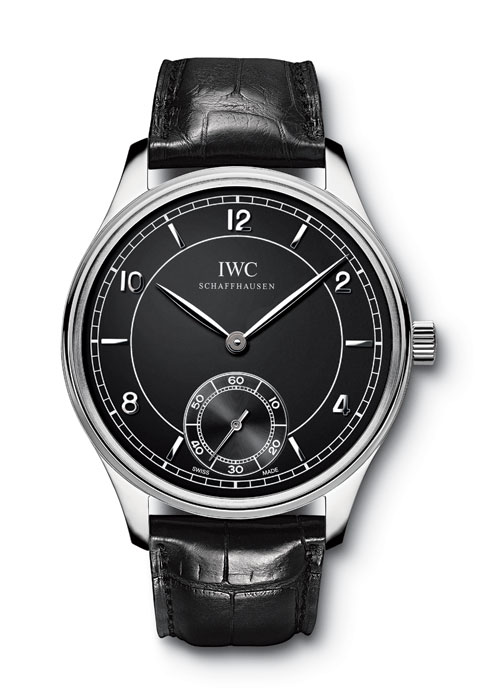
Portugaise Remontage Manuel
<p> </p><p><strong>Portuguese Hand-Wound </strong></p> <p>The Portuguese of 1939 is a true watch legend that stylistically comes as close as possible to the perfect ideal of a good watch design. As the first “wristwatch” it established the large size worn on the wrist that is very popular today. It was also the first to break the taboo of wearing a complete pocket-watch movement on one's arm. It was successful, and still is today for IWC. It had established a completely new class of watch. There is no question that, as founder of a splendid family of IWC watches, the Portuguese watch is one of the significant witnesses of the company's proud history. It got its name from the fact that just such a watch was requested by two Portuguese businessmen at the end of the 1930s. They wanted a high-precision watch that would embody their proud tradition as a seafaring nation. From the start the “Portuguese”, as it was only named years later, with all its features was an unofficial marine chronometer and laid out like a navigational instrument. For the Portuguese Hand-Wound, from the numerous dials used for the original Portuguese the most optically interesting one has been chosen, which has never been used for recent Portuguese watches: Arabic numerals and graduations for the indices alternate, the actual measuring range is separated off at the dial centre by another circle, the minute chapter ring is in the “chemin de fer” – railway – style very popular at the time. The same graphic elements also appear in the seconds display circle. The case (44 mm) with its fluted bezel and slightly pulleddown strap lugs is in keeping with the original. The new Vintage Portuguese does differ from the original – and the 1993 anniversary model – in that it has antireflective, crossed out sapphire glass over the dial. It is powered by the 98295-calibre that is almost identical to the Vintage Pilot's Watch movement: hand-wound, a balance frequency of 2.5 Hz, large screw balance, Breguet balance spring, nickel-plated silver three-quarter plate, pearled bridges decorated with Geneva stripes. Here too the elongated index, the socalled “Jones arrow”, which goes from the balance cock to the plate, is a reference to the company's founder Florentine Ariosto Jones, who founded the manufactory on the Rhine 140 years ago and got it up and running. </p> <p> </p>

